Leningrad NPP from the inside

At present, there are 10 industrial nuclear power plants in Russia, which operate 31 power units with a total capacity of over 23 gigawatts. Despite the fact that the share of nuclear energy accounts for about 16% of electricity production (the rest is shared by hydropower plants - 21% and fuel energy - 63%), the peaceful atom plays a crucial role in the country's energy system. NPPs are strategic facilities and it’s almost impossible for an average citizen to get there, so they usually do not refuse this opportunity. Last week I was able to visit the Leningrad Nuclear Power Plant, which has been operating for more than 36 years.
Despite the fact that the tour included a visit to the central and machine rooms of the nuclear power plant, the station’s security service allowed to take pictures only on the territory of the Training Center, so I will compensate for the missing photos found on the Internet (unsigned pictures are mine). The reactor control room at the UTC is almost the same as that of unit 1 of the Leningrad NPP, adjusted for a time difference of 30 years. Since NPP units (there are 4 of them) were consistently put into operation for almost 7 years, and the subsequent modernization was uneven, the technical equipment of their control rooms may differ significantly. So, the role of the video wall (above) is quite successfully performed by the switch instruments and means of light indication (below).
')
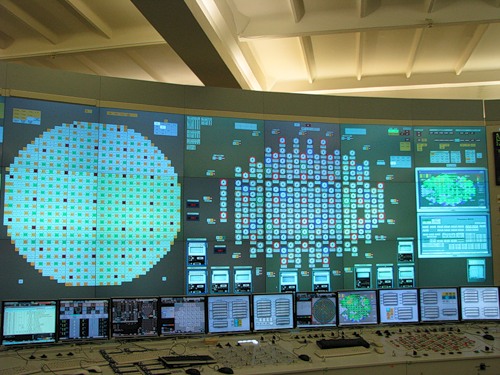

Photo - fritzmorgen
This is how this video wall looks from behind. Completely modern equipment, Dell server:
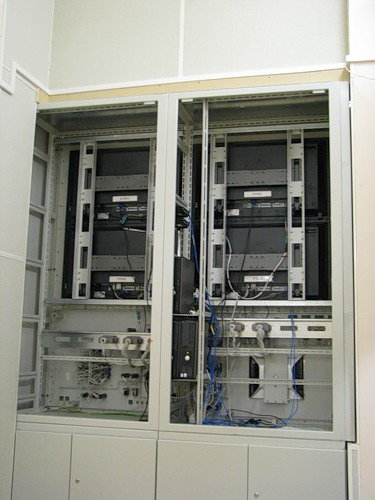
On the far wall there are displays with information on current power generation. The traffic light is green - it means everything is good.
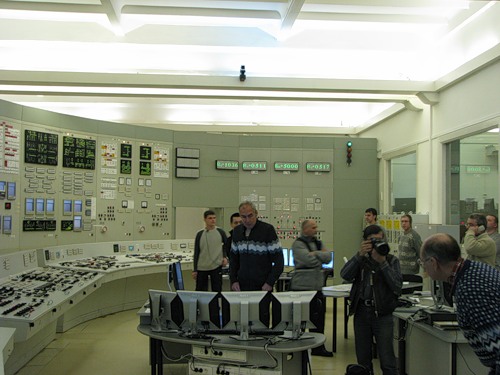
All the electronics in the control room serves mainly to indicate the operating parameters of the reactor. The direct control of the station is carried out from the hardware console. Automatic protection of the station controls the actions of the operator and does not allow to increase the power of the unit above certain values, even despite the fact that constructively the reactor can work stably in this mode. The “red button”, which emergency stops the NPP reactor, is located under the monitors at the left edge of the image and is called the emergency protection key (AZ):
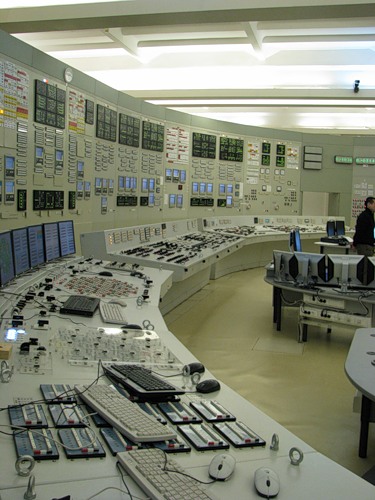
The auxiliary role is assigned to electronics, not only in terms of monitoring the operation of the station, but also in terms of information storage. In addition to the classic paper magazine, paper recorders and printer listings are very common.

There are such block diagrams with backlighting of the active parts of the circuit. Very neat and informative.
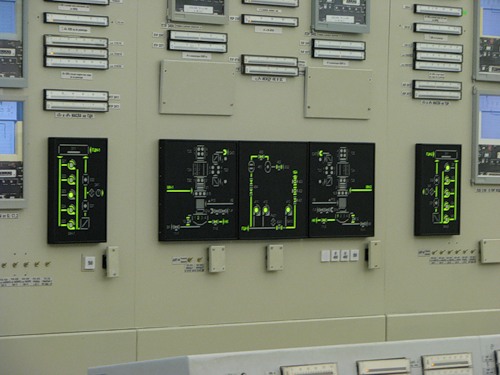
The training center is designed to work out abnormal situations in the operation of nuclear power plants. Changing the control room consists of several people responsible for controlling the reactor, power unit and turbine. The instructors behind the glass set the parameters for the training failure, a rather nasty siren turns on, after which some engineers try to identify and fix the problems, the other starts to report everything by phone. The instructor has the opportunity to listen to all the talks and direct numerous cameras to the console or the workplace of any employee.
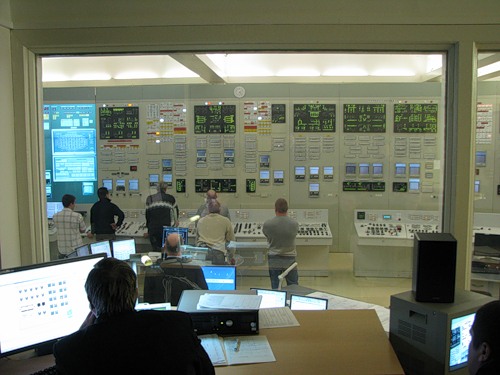
Anticipating the main question habrayuzerov: yes, there is Windows Server 2003 / XP. JADE JStation is used to simulate the station, part of the software is self-written. Even more beautiful photos of monitors with the horizon littered can be seen in the album on Yandex. Photos.
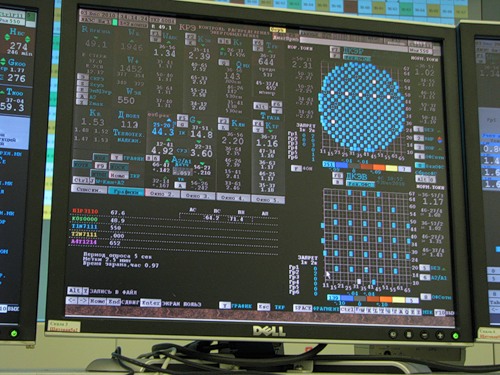
Leningrad NPP is the first NPP in the USSR with the RBMK-1000 reactor, notorious after the Chernobyl accident. This reactor is a channel, heterogeneous, uranium-graphite (graphite-water moderator), boiling type, thermal neutrons; it is intended for production of saturated steam with a pressure of 70 kg / cm ². Heat carrier - boiling water. Beautiful picture from Wikipedia attached:
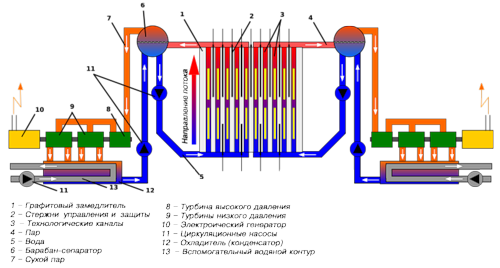
The basis of the RBMK-1000 core is a graphite cylinder with a height of 7 m and a diameter of 11.8 m, composed of smaller blocks, which acts as a moderator. Graphite is penetrated by a large number of vertical holes, through each of which a pressure pipe passes, which is also a technological channel. The photograph “reactor cover” in the central hall of the NPP shows the elements of biological protection:
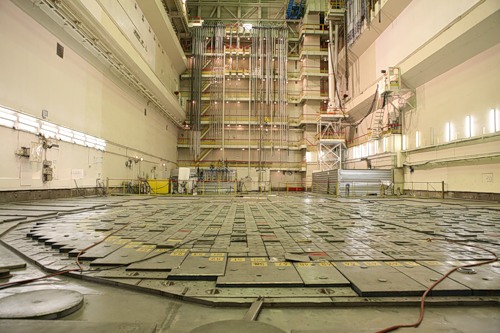
At the rear wall can be seen rods loaded into the reactor. The last 7 meters are placed in the core, the rest is protective, with a special screw thread to protect against radiation. In the next picture you can see bloggers (right) at the base of the loading and unloading machine (left), designed for operations with stitches. The height of this machine corresponds to the height of the central hall (20-25 meters), while it provides accuracy of alignment with the channel up to 1 mm. The machine operator is in another room behind thick lead glass and controls all operations through a video camera.

Photo - press service of Rosenergoatom
For almost an hour of stay at the station (including the central hall), the radiation dose accumulated by me was 7 µSv . This is about the same as each passenger receives a two-hour flight due to ionizing radiation. Those who fly frequently can calculate their accumulated dose here .
The power part of the station consists of turbines and a generator. In total, the power unit has 2 symmetrically located generators, each of which is associated with 4 turbines. In the machine room only the upper part of them is visible, the rest of the structure is located underground on several floors.
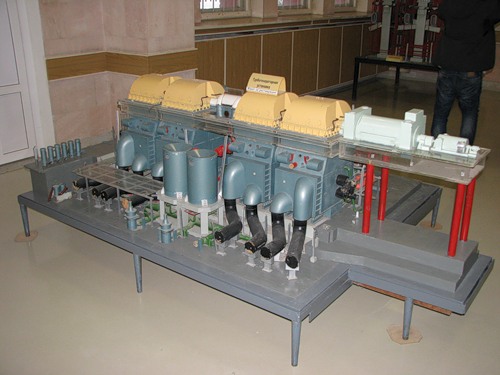
In real scale, they look like this (photo also from LNPP, blue generator, in the background, yellow turbines):

Photo - sevastyan-rabdano
In the engine room is very noisy (almost impossible to talk) and hot. Along the walls are pipes of circulation circuits. Interestingly, for the operation of each turbine requires a constant flow of engine oil. There are even special “portholes” for observing him. The 3 thick horizontal pipes in the photograph are tokoprovod , 3 phases, which then go to 2 transformer complexes, which provide transportation of electricity through 220 and 750 kV transmission lines.
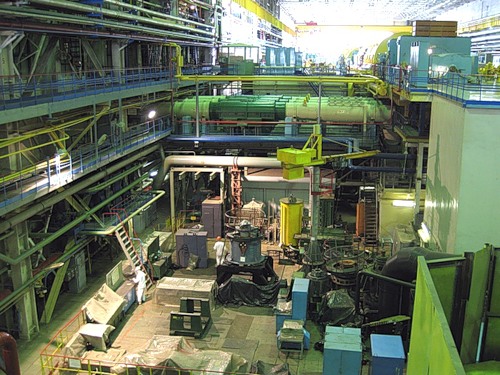
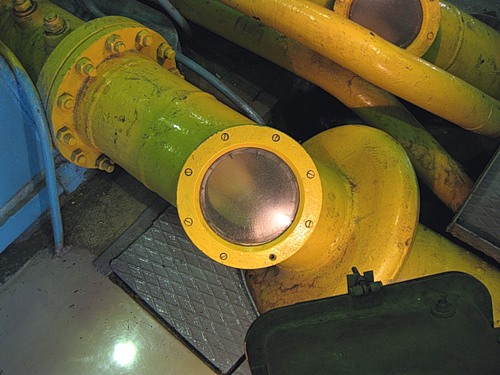
Photo - belik
The scale of the machine room and the station as a whole is amazing. Many thanks to Rosenergoatom for organizing the tour. If there are any questions, I will gladly try to answer them. The excursion program also included participation in the grand opening of the innovative environmental monitoring tool “New Radiation Boards” (on the photo). The radiation background in the city of Sosnovi Bor is normal (proof in the photo), the city can sleep peacefully.
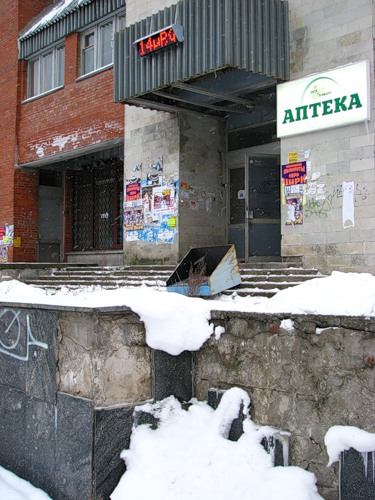
Source: https://habr.com/ru/post/109427/
All Articles